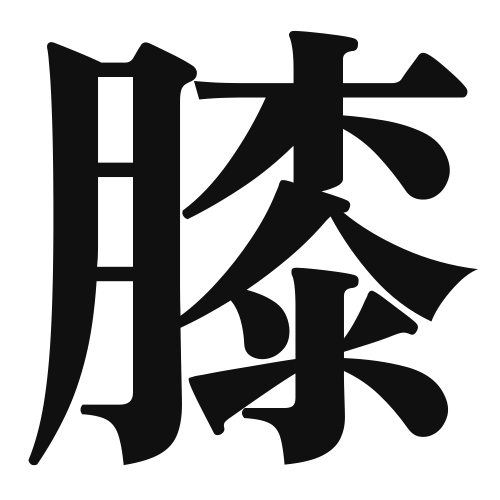1. Overview of Meaning
The kanji “膝” (pronounced “hiza” in Japanese) means “knee.” It refers to the joint in the middle of the leg that connects the thigh to the lower leg.
2. Formation and Radical
Formation of the Kanji: The kanji “膝” is a phonetic compound (形声文字) that combines the radical for “meat” (肉) on the left, indicating it relates to the body, with the phonetic component “シ” (shi) on the right.
Radical: The radical for “膝” is 肉 (niku), which is commonly associated with body parts or flesh.
3. Examples of Usage
Common Words and Phrases:
- 膝を曲げる (hiza o mageru) – to bend the knee
- 膝痛 (hiza tsuu) – knee pain
Example Sentences in Daily Conversation:
- 「運動しすぎて膝が痛いです。」(Undou shisugite hiza ga itai desu.) – “I have knee pain from over-exercising.”
- 「膝を曲げて座ってください。」(Hiza o magete suwatte kudasai.) – “Please sit down with your knees bent.”
4. Synonyms and Antonyms
Similar Kanji:
- 腿 (もも, momo) – thigh; refers to the upper part of the leg.
- 足 (あし, ashi) – foot/leg; a more general term for the lower limb.
Antonyms:
- 頭 (あたま, atama) – head; the opposite end of the body from the knee.
5. Cultural and Historical Background
Relation to Japanese Culture: The knee is often associated with traditional practices such as kneeling in Japanese culture, especially during formal ceremonies or when showing respect.
Proverbs and Idioms:
- 「膝を打つ」(hiza o utsu) – literally “to hit one’s knee,” meaning to suddenly realize or understand something.
